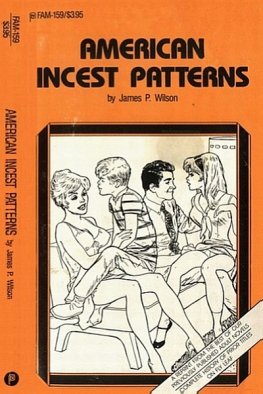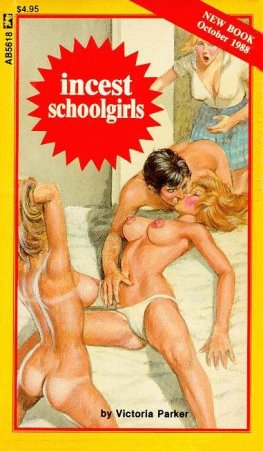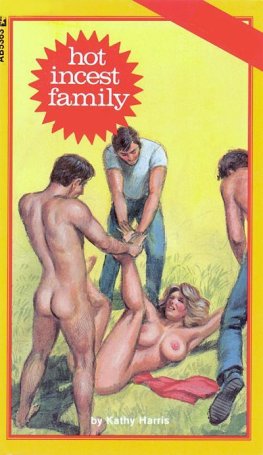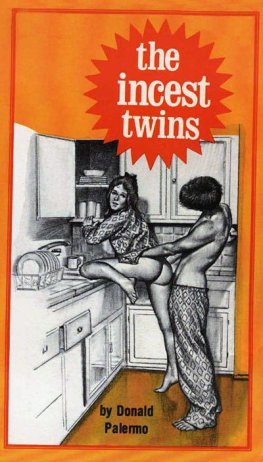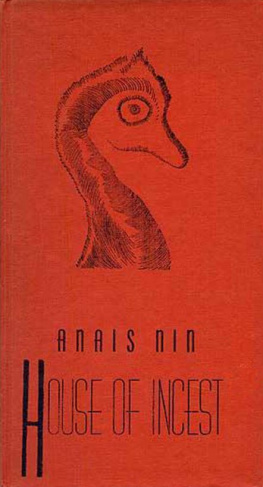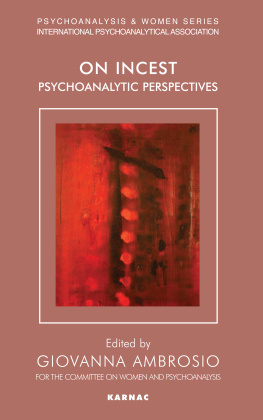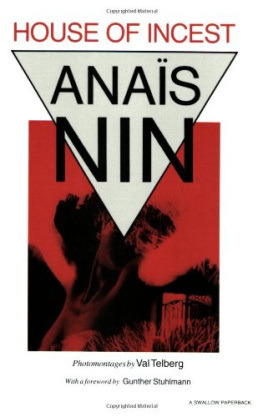Domestic Intimacies
EARLY AMERICAN STUDIES
Series Editors
Daniel K. Richter, Kathleen M. Brown,
Max Cavitch, and David Waldstreicher
Exploring neglected aspects of our colonial, revolutionary,
and early national history and culture, Early American Studies
reinterprets familiar themes and events in fresh ways.
Interdisciplinary in character, and with a special emphasis on
the period from about 1600 to 1850, the series is published in
partnership with the McNeil Center for Early American Studies.
A complete list of books in the series
is available from the publisher.
Domestic Intimacies

Incest and the Liberal Subject
in Nineteenth-Century America
Brian Connolly

Copyright 2014 University of Pennsylvania Press
All rights reserved.
Except for brief quotations used for purposes of review or scholarly citation,
none of this book may be reproduced in any form by any means
without written permission from the publisher.
Published by
University of Pennsylvania Press
Philadelphia, Pennsylvania 19104-4112
www.upenn.edu/pennpress
Printed in the United States of America
on acid-free paper
10 9 8 7 6 5 4 3 2 1
Library of Congress Cataloging-in-Publication Data
Connolly, Brian.
Domestic intimacies : incest and the liberal subject in nineteenth-century America / Brian Connolly.1st ed.
p. cm. (Early American studies)
Includes bibliographical references and index.
ISBN 978-0-8122-4621-6 (hardcover : alk. paper)
1. IncestUnited StatesHistory19th century. 2. LiberalismUnited StatesHistory19th century. 3. IndividualismUnited StatesHistory19th century. 4. Domestic relationsUnited StatesHistory19th century.
I. Title. II. Series: Early American studies.
HV6570.7.C65 2014
306.877097309034dc23
2013047826
Contents

Introduction

Liberalisms Incestuous Subject
In 1828, in the first edition of his dictionary, Noah Webster defined incest as the crime of cohabitation or sexual commerce between persons related within the degrees wherein marriage is prohibited by the law of a country. As definitions go, this one seems rather straightforward. Yet, as far as incest goes, it presents numerous questions. The one thing we think we know about incest is that its prohibition is universal and has been in existence since humans organized themselves into something resembling families. Of course, this one thing is an illusion, and Websters definition gets at some of the problems with that illusion. First, this particular definition hitched incest to the system of criminal law rather than to biblical injunction. Second, Webster tied the prohibition to the legal systems of nations, which inspires the question: If the prohibition of incest was dependent on nationally bounded legal systems, was it possible that a nation could simply forego the prohibition of incest? Finally, in Websters definition the crux of the prohibition was dependent on marriage, yet it was unclear if the prohibition of marriage between near kin was part of incest or something else altogether. What is clear is that, for a universal prohibition that, for several centuries, has been treated as one of the fundamental laws of human culture, Webster, perhaps unwittingly, introduced a great deal of ambiguity.
Perhaps aware of this, perhaps simply trying to cut words, Webster modified the definition in an abridged version of his dictionary in 1839. Gone was the ambiguity; the definition was shorter but more capacious and seemingly universal. Incest was now cohabitation of persons within prohibited degrees of kindred.degree of intimacy. In that, it incorporated sex and potentially gestured at marriage. But if marriage and sex were encompassed by cohabitation, crime was gone altogether. This definition passed no judgment, made no claims. Finally, the particularity of the original definition, which hinged on the inclusion of national laws, was gone. With this elision one could presume that there were prohibited degrees of kindred everywhere, that men and women potentially cohabited everywhere, and thus that the prohibition of incest was universal.
A history of the incest prohibition in nineteenth-century America entails excavating this space between the universal and the particular in various articulations of the prohibition. In this period, the incest prohibition was in flux. No matter how frequently or forcefully one invoked the fundamental nature of the prohibition, its universal and uniform character, the function of the prohibition, its parameters, and indeed, its meaning, were increasingly unclear. If the universal and seemingly self-evident character of the prohibition is, to a greater or lesser extent, an illusion in every age, that does not mean it is the same illusion or doing the same work across time. The question is thus why and to what end was the language of universalism deployed in relation to the prohibition of incest in nineteenth-century America. Put differently, if the incest prohibition was supposed to be a foundational law of human society, universal in nature, that inaugurated both kinship and culture, why were so many people in the nineteenth century so worried that the family was inherently incestuous and that one of the great sexual and marital dangers of the period was incest?
In the chapters that follow, I trace articulations of the incest threat and the incest prohibition in the nineteenth century as a problematic of liberalism and the liberal subject.comforts, warmest affections, and most intimate affairs in the private life of the bourgeois, sentimental family. The liberal subject, then, was fully realized in the constant movement between the public world of markets, politics, and sociality and the private life of the family.
Liberalism, sentimentalism, consent, and affection are not words commonly associated with incest. Rather, force, domestic violence, pedophilia, rape, and, in a different register, reproduction have had an overwhelming influence on historical and psychological accounts of incest. My aim is not to replace one set of terms with the otherone need only glance at the nineteenth-century discourse of incest to see that it was determined by force and violence as much as sentiment and consent. Nor is my aim to refute those accounts of marriage and the sentimental family that associated it with a discourse of stability amid the social and political disruptions of liberal democracy. In historicizing the discourse of incest in the nineteenth-century United States, I seek to demonstrate how the separation between consent and force, sentiment and domestic violence, love and rape became at once structural conditions of the discourse and ultimately impossible distinctions. Force and consent were implicated in one another, as were sentiment and violence, love and rape. That these structural conditions and their partial undoing came together in writings on incest in this period illustrates the extent to which the supposedly private family and sexuality were both implicated in one another and were at the core of the deployment of liberalism as a way of life.
The aim of this book, then, is to treat the incest prohibition and thus incest as the subject of a genealogy. Genealogy, Michel Foucault has written, must record the singularity of events outside of any monotonous finality; it must seek them in the most unpromising places, in what we tend to feel is without historyin sentiments, love, conscience, instincts; it must be sensitive to their recurrence, not in order to trace the gradual curve of their evolution, but to isolate the different scenes where they engaged in different roles. In other words, genealogy takes those categories that seem natural or self-evident or culturally necessary and demonstrates that things have not always been this way, that categories like incest have not always had the same meaning, that at specific moments these categories had very different meanings and functions, frequently having little to do with what they meant either before or after that moment. Moreover, genealogy is not interested in discovering the origins of this or that category; indeed, it opposes itself to the search for origins. prohibition sets itself apart from much of the work on the incest prohibitionanthropological, sociological, psychoanalytic, and sociobiologicalwhich frequently concerns itself with the origins of the prohibition, instead inquiring in to the category of incest itself in order to denaturalize it.
Next page

